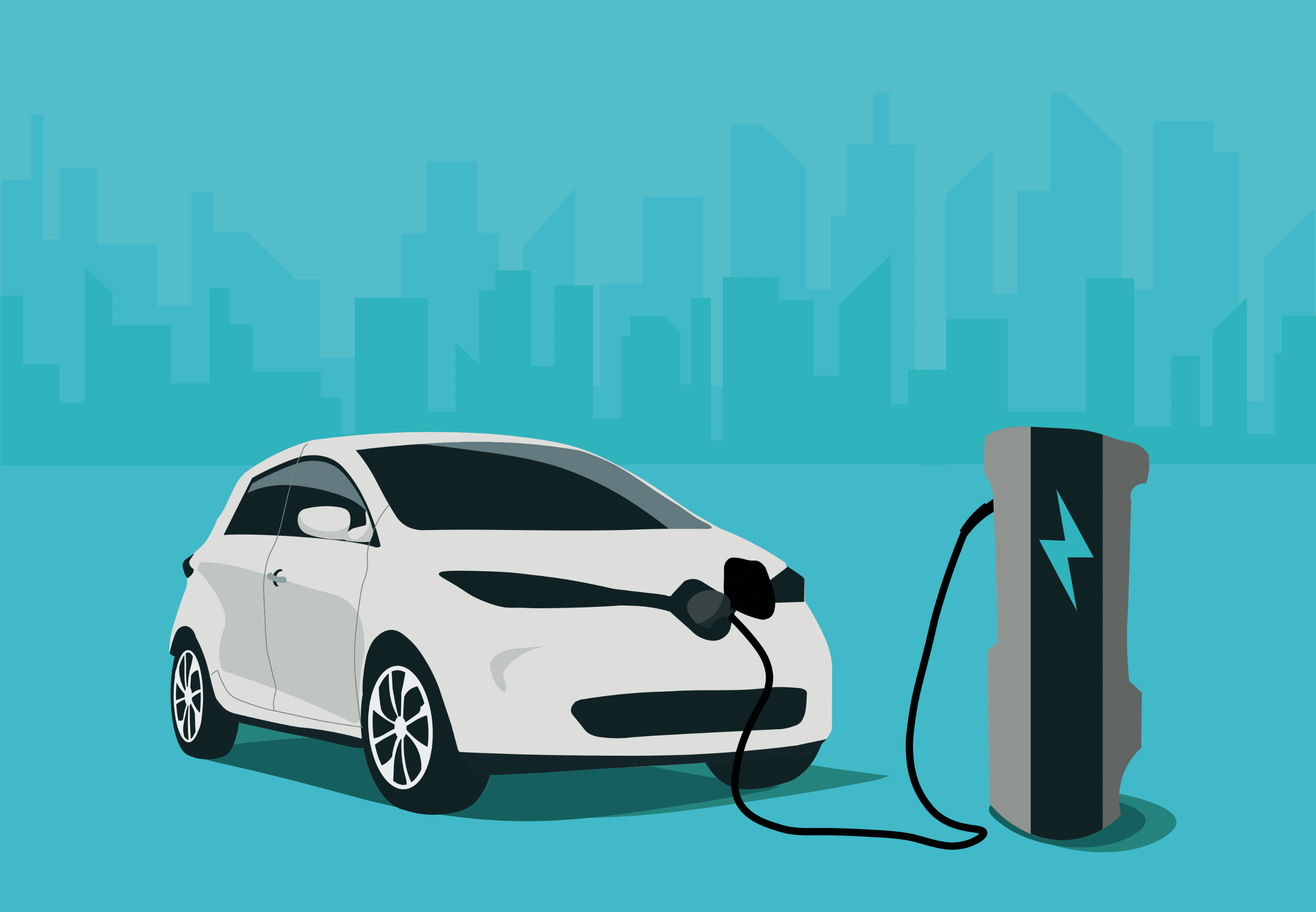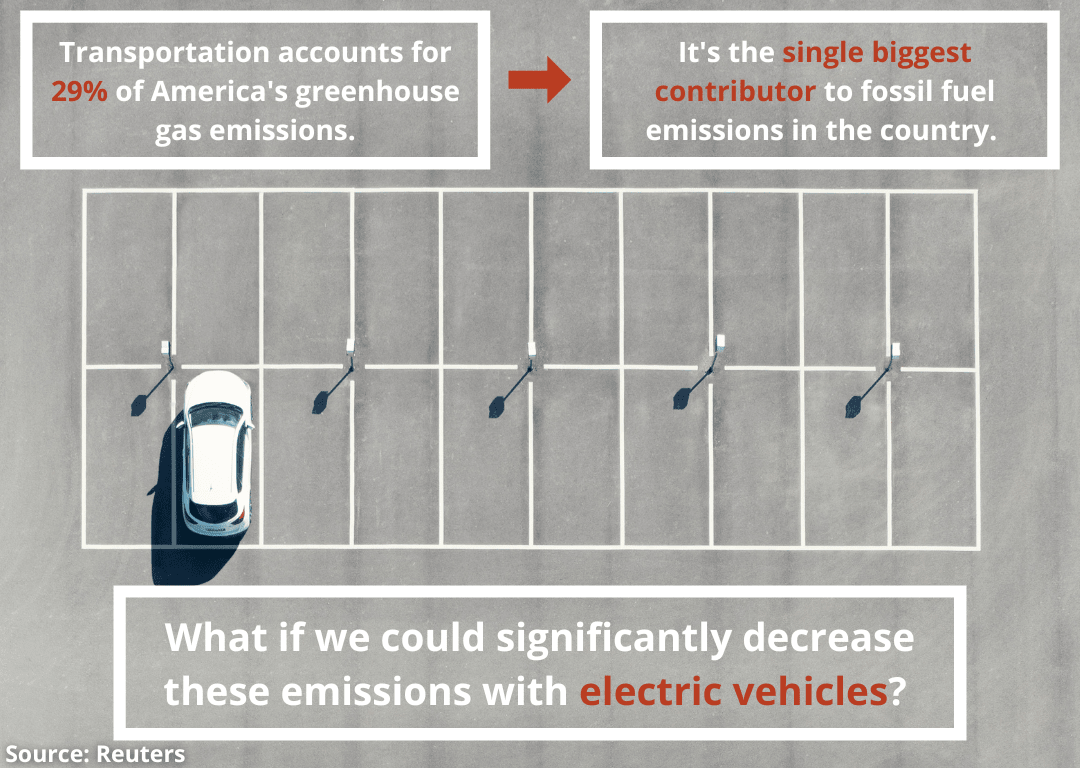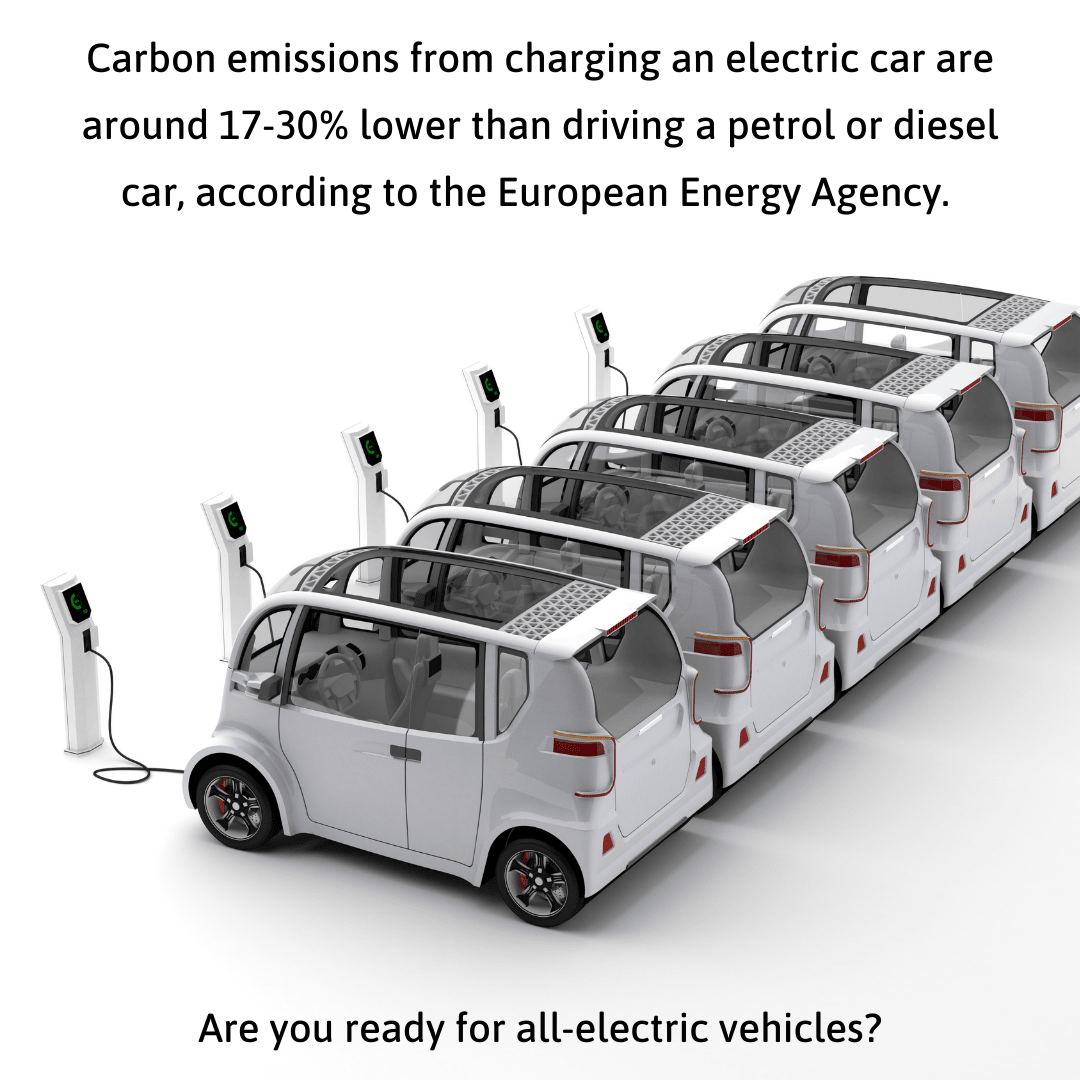
Electric-Vehicles, Pollution, and the Environment
Can fully-autonomous, electric vehicles be a climate change strategy?
American communities have been built for automobiles, so perhaps it’s not surprising that one of the nation’s largest sources of greenhouse gas emissions is the transportation sector. “Going green” is near impossible with the massive amounts of carbon dioxide produced by traditional internal combustion engines. Combatting the climate crisis requires a shift towards electric — and shared, autonomous — vehicles. Electric AVs emit fewer greenhouse gases and pollutants than petrol and diesel cars, even taking into account the energy needed to manufacture and power them.
Greenhouse gas emissions in America
- Given the layout of many American cities, and the country’s highway system connecting conurbation hubs, simply abandoning automobiles is not currently feasible. A more viable solution: shifting away from fossil fuels.
- The transportation sector accounts for 29% of all greenhouse gas emissions in America. These emissions primarily come from fueling cars and trucks to transport people and goods. 90% of vehicles have internal combustion engines and use petroleum-based fuel, which burns carbon dioxide.

- While the transportation industry has a major role to play in hastening, or combatting, climate change, they are not alone. Electricity production (25% of 2020 greenhouse gas emissions), burning fossil fuels for the industrial sector (24%), and residential and agriculture (11%) round out some of the primary industrial sources of greenhouse gas emissions in the U.S. Businesses and homes contributed 13% of 2020 greenhouse gas emissions, which primarily stemmed from fossil fuels burned for heat, the use of products containing greenhouse gasses, and waste management.
Benefits vs. impacts of electric vehicles
- A Reuters headline in early 2022 summarized the hope placed in AVs: “The transportation of tomorrow will address climate change.”
- All-electric, autonomous vehicles have no tailpipe emissions — they produce no carbon dioxide emissions while driving, reducing air pollution.
- Generating the electricity to charge an EV can create carbon pollution, though this number varies. The amount of pollution created depends on the location of the power (local or remote) and if the energy is being produced by renewable or nonrenewable resources. Manufacturing EV batteries does require additional energy, but according to the Environmental Protection Agency, EVs still have fewer lifetime emissions than internal combustion engine vehicles.
- Even accounting for the electricity used to power EVs, research shows that the vehicles still emit fewer greenhouse gasses than gas-powered vehicles. Carbon emissions from charging an electric car are about 17-30% lower than driving a petrol or diesel car, according to the European Energy Agency.

- Researchers and EV manufacturers are continuing to study ways of further reducing greenhouse gas emissions, including the recycling of the aforementioned batteries. And if EVs are charged with wind or solar power, the total associated GHG are considerably less.
What about autonomous vehicles?
- Driverless electric vehicles could offer another level of environmental benefits.
- Eventually, autonomous vehicles (AVs) could be entirely rideshare, allowing households to have zero or one car for the whole family. This would decrease the number of cars on the road significantly. It could also reduce the number of parked cars, allowing for the reclaiming of lots to create green spaces.
- A sizeable amount of gas burns when we drive at high speeds, break, and re-accelerate. AV carpools can reduce these factors of driving, meaning less gas will burn, less battery power will be consumed, and less air will be polluted. AV research found that even replacing 10% of traditional cars with self-driving cars can increase the flow of traffic — even doubling the average car speed in some areas. Researchers from the University of Berkeley and Delaware state:
“...Automated vehicles have the potential to alleviate…congestion, accident rates, and greenhouse emissions through a combination of intelligent routing, smoother driving behaviors, and faster reaction time.”
What’s next?
- The Biden administration’s long-term climate-change strategy includes reaching net-zero emissions by 2050. Electric vehicles are the way to do that.
- In 2021, the major federal infrastructure bill provided $7.5 billion to build more EV-charging stations across the country. Recently, the administration unveiled a proposal to require EV charging stations to be no more than 50 miles apart. President Biden has a goal of creating 500,000 charging stations by 2030, built with federal funds.
- An increase in EV infrastructure will make the vehicles more accessible to the public, reduce the hassles of everyday car ownership, and decrease emissions.
Can fully-autonomous, electric vehicles be a climate change strategy?
The Latest
-
 Changes are almost here!It's almost time for Causes bold new look—and a bigger mission. We’ve reimagined the experience to better connect people with read more...
Changes are almost here!It's almost time for Causes bold new look—and a bigger mission. We’ve reimagined the experience to better connect people with read more... -
 The Long Arc: Taking Action in Times of Change“Change does not roll in on the wheels of inevitability, but comes through continuous struggle.” Martin Luther King Jr. Today in read more... Advocacy
The Long Arc: Taking Action in Times of Change“Change does not roll in on the wheels of inevitability, but comes through continuous struggle.” Martin Luther King Jr. Today in read more... Advocacy -
 Thousands Displaced as Climate Change Fuels Wildfire Catastrophe in Los AngelesIt's been a week of unprecedented destruction in Los Angeles. So far the Palisades, Eaton and other fires have burned 35,000 read more... Environment
Thousands Displaced as Climate Change Fuels Wildfire Catastrophe in Los AngelesIt's been a week of unprecedented destruction in Los Angeles. So far the Palisades, Eaton and other fires have burned 35,000 read more... Environment -
 Puberty, Privacy, and PolicyOn December 11, the Montana Supreme Court temporarily blocked SB99 , a law that sought to ban gender-affirming care for read more... Families
Puberty, Privacy, and PolicyOn December 11, the Montana Supreme Court temporarily blocked SB99 , a law that sought to ban gender-affirming care for read more... Families

 Climate & Consumption
Climate & Consumption
 Health & Hunger
Health & Hunger
 Politics & Policy
Politics & Policy
 Safety & Security
Safety & Security
